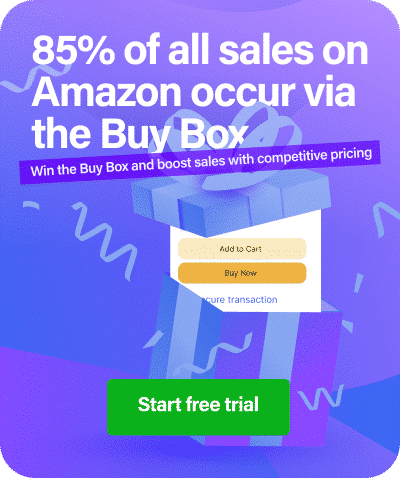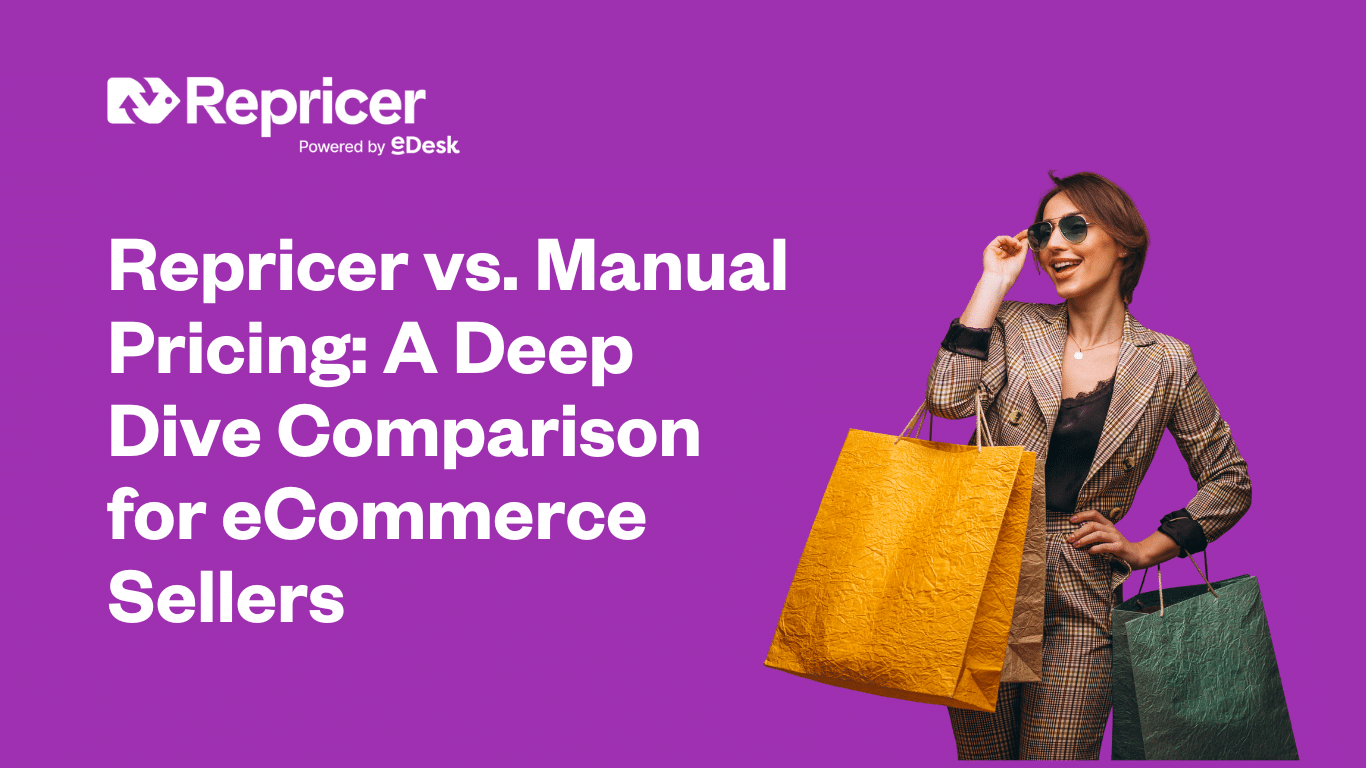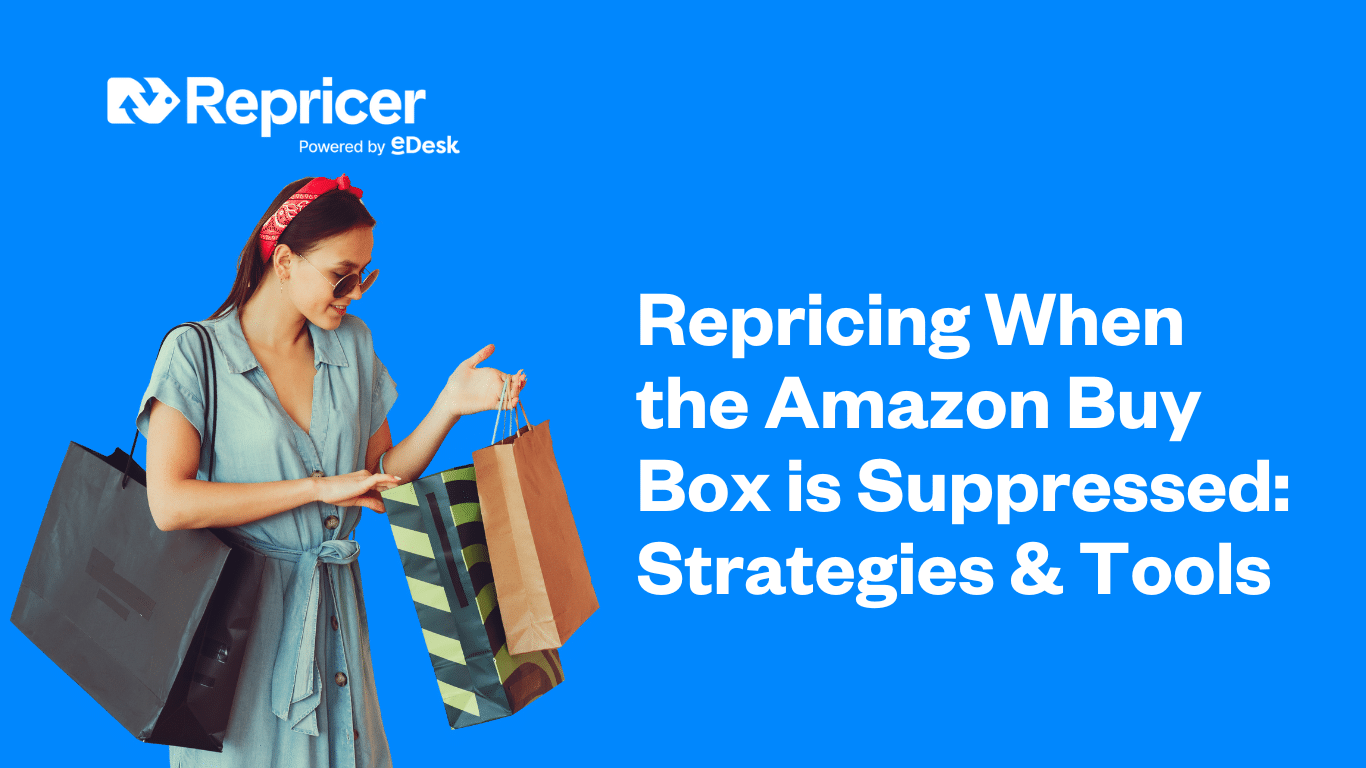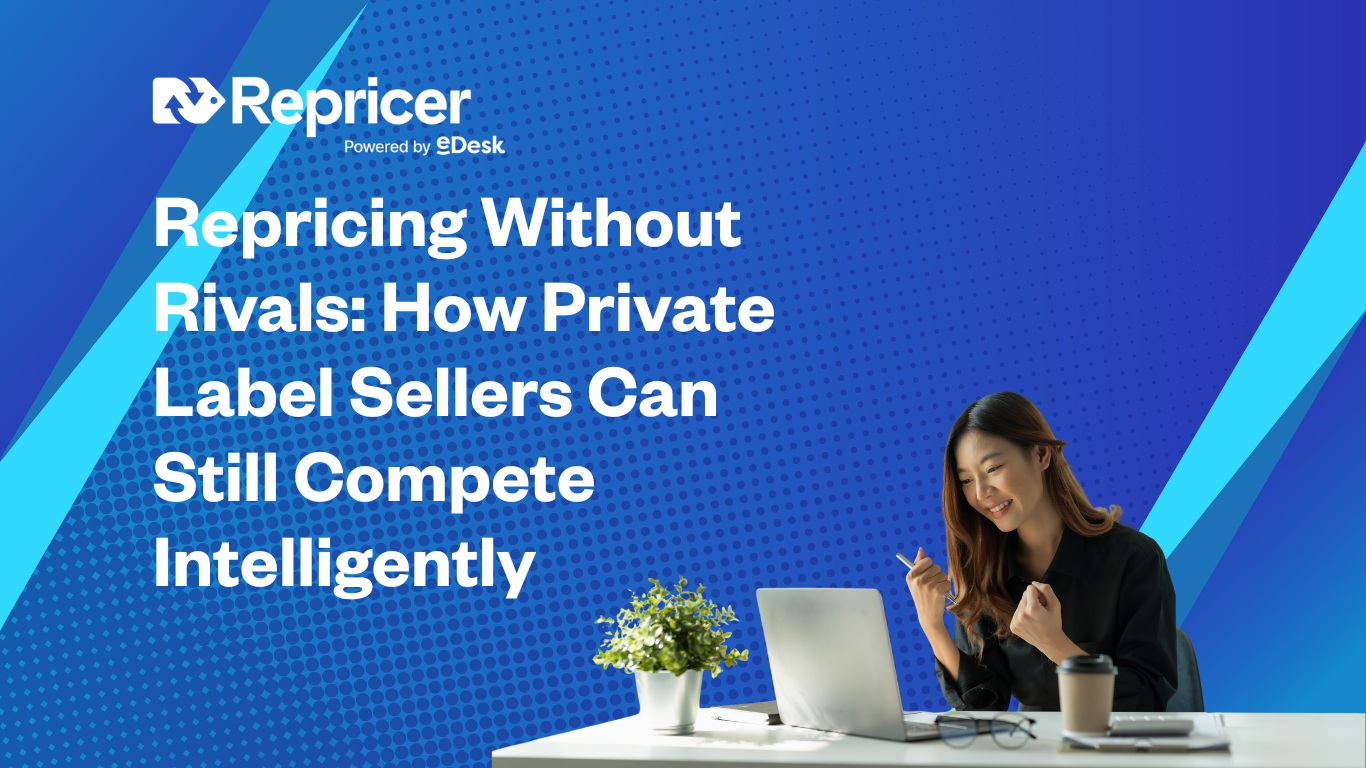Being a private-label seller, you might think that repricing isn’t necessary since you control your brand and prices. It seems straightforward with no direct competition. But, reconsider this approach. Repricing can actually boost your profits. Even without competitors, adjusting prices can help you make the most of your sales.
In this article, we’ll guide you through the best ways to set effective pricing strategies even when there is no competition.
What is Amazon Repricing?
Amazon repricing is all about how prices constantly change in the marketplace. It’s about finding the best price to sell your products for the highest profit while staying competitive. With so many sellers on Amazon, being good at adjusting prices is key to staying ahead.
So you must be wondering…
How does it work?
Repricing on Amazon is about finding the right balance: setting prices low enough to attract buyers but high enough to make a profit. It’s not about manually changing prices all the time – that’s too much work with so many products and competitors on Amazon. Instead, using an intelligent repricing solution such as Repricer.com can help automate and instantly react and adjust your pricing to ensure your products stay competitive.
Related: How Repricing Works
Standard Repricing Vs Private Label Repricing

Amazon sellers have several repricing strategies to pick from. Generally, there are two main approaches: standard competitor repricing and private label repricing, depending on the seller’s needs. Both use an Amazon repricer, but they’re different in a few key ways.
Standard repricing is like a battle where sellers with identical products on the same ASIN compete fiercely, often changing prices to get the Buy Box. It’s all about reacting to competitors’ pricing moves instantly.
Private label repricing is different. If you’re a private label seller, you’re focused on generating more profit rather than just staying competitive. You have unique products, so there’s no direct competition to constantly react to. This means you have more control over your prices. Using an Amazon repricer as a private label seller is still important, but it’s about being creative and figuring out how to maximize your profits through better pricing strategies.
The choice between these strategies depends on your business model, goals, and what you’re selling on Amazon. Let’s explore how repricing works for brand sellers in more detail.
How to Reprice Private Label Products
Your private label products need a different approach than regular marketplace items. Here’s how to create a successful repricing strategy for your brand:
- Know Your Costs: Understand all costs related to your product, including manufacturing, packaging, shipping, and Amazon’s fees.
- Watch Your Competitors: Keep an eye on your ‘closest competitors’ and their pricing strategies. This knowledge helps you set the right selling price.
- Set Your Price Range: After analyzing your costs and ‘close competition’, establish your minimum and maximum prices. Your minimum price is the lowest point at which you’ll sell, ensuring you always profit from each sale. Your maximum price is set to maximize profits while still attracting eager buyers.
Using a smart Amazon repricer, like Repricer.com, can be a turning point. It automates these steps and sets up a dynamic pricing strategy that adapts quickly to market changes.
As a private-label seller, you have two primary repricing strategies to choose from.
Sales Repricing
Sales repricing is an excellent pricing strategy that uses data from your own sales and orders, not just competitor prices. It’s a dynamic approach that considers factors like how much stock you have and customer demand. For example, if a product is selling fast and stock is low, you might raise the price to make the most profit from what’s left. But if something isn’t selling well, you might lower the price to boost sales.

Customer demand can change based on the time of year, current trends, and market conditions. If your product is in high demand, raising the price could capitalize on this increased interest. Conversely, if there are fewer buyers, reducing the price might attract more customers.
Cross-ASIN Repricing
Cross-ASIN repricing is different from standard competitor-based repricing. Instead of competing on price for the same product (ASIN), it lets sellers compete with similar products under different ASINs. With Cross-ASIN repricing, sellers can adjust their prices in response to competitors selling similar products.

For example, consider an Private-Label Amazon seller with a unique organic facial moisturizer. They notice a competitor, ‘EcoGlow’, offering a similar product. To stay competitive, they use Cross ASIN Repricing to track and respond to EcoGlow’s price changes. If EcoGlow drops their price, the seller lowers theirs too, attracting customers looking for a better deal. When EcoGlow’s price goes back up, the seller also increases their price, ensuring they don’t miss out on profits.
How Repricer Can Boost Private-Label Profits
Repricer has these in-built features tailored for private-label sellers, helping boost sales and profits through optimized pricing.
By using Repricer’s efficient strategies, as discussed above, you can adjust your prices to earn more during high sales periods and lower them to attract buyers when sales dip.
The Cross-ASIN feature lets you compete beyond your own ASIN by targeting up to five competitors with similar products. This approach helps ensure you’re maximizing your earnings and growing your business more quickly.
Speed is also crucial in Amazon’s fast-paced market. With Repricer’s ultra-fast repricing, prices can be updated in just seconds. This ensures that every sale is made at the best possible price.
Final Thoughts
It’s clear that mastering the art of pricing on Amazon is crucial for the growth and profitability of your brand. While private label selling provides the unique advantage of having no direct competition on your ASIN, leveraging repricing strategies is key to maximizing your success.
Whether it’s utilizing sales repricing to adjust prices based on your stock levels and sales data or adopting Cross-ASIN repricing to strategically compete with similar products, each strategy offers its own set of advantages. The goal is to find the right balance that works for your specific products and business model.
To see how you can enhance your profits, Repricer provides a 14-day free trial ensuring your pricing strategy is set up for maximum profitability.






